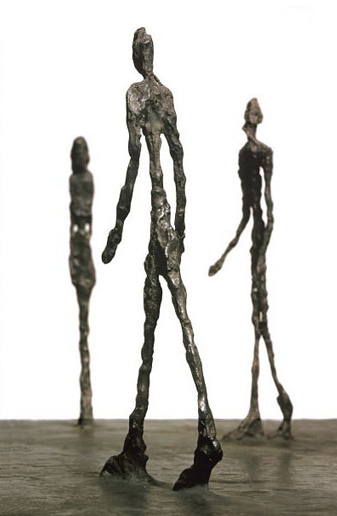A WONDER that they can stand at all, let alone stand to attention as they do. Thinner than anorexic, their defiance of their own frailty is what impresses: their eyes-forward, chin-up determination simply to exist. Bits of them are missing - part of a leg, or an arm - but that is no surprise under the circumstances. They have been through a lot. They are graduates of one of the most punishing physical regimes of modern times: the Alberto Giacometti Total Fitness Programme. They might only be works of art, but other sculptures would have crumbled under the strain.
Standing Women prove that the G- Plan diet was nothing if not demanding: slim, slim again and then slim some more, until there's almost nothing left of you. More than 20 of these almost nothings can currently be seen at the Tate Gallery, Liverpool, in what is itself a slimmed-down display of the artist's later oeuvre.
Alexander Libermann, who visited Giacometti in Paris in 1960, described the single room where the artist lived and worked as a monastic retreat, its walls stained a dispiriting grey by a lifetime's chain-smoking. Libermann was particularly disconcerted by a multitude of ''long, narrow, life-size figures of white plaster'' which seemed to him ''like apparitions from another planet''. There are some photographs of Giacometti's studio in the current show, but what counts now is the work rather than the milieu in which it was created.
Giacometti's figures look like survivors, figures persisting on the brink of extinction. The tiniest of them, the Four Figurines on a Base, are almost miraculously attenuated. Blink and they might disappear altogether. They are the products of what can seem a bizarre notion of figurative sculpture, the chief preoccupation of which is not, in fact, the human figure, but the space...


